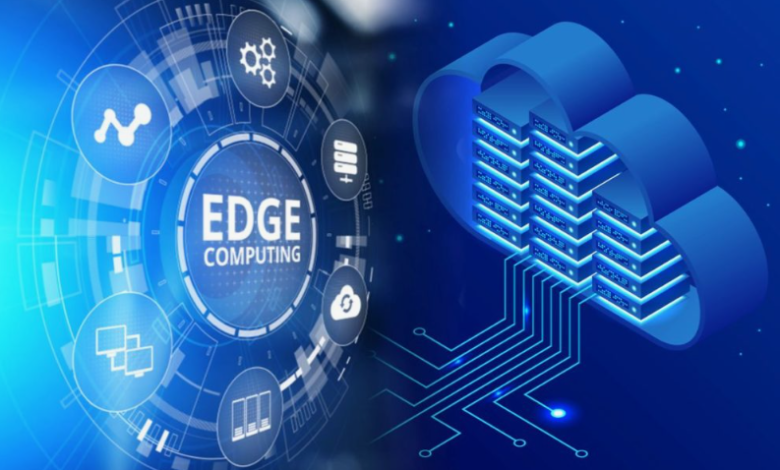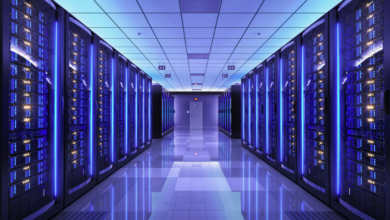How Edge Computing Shapes the Future of Business Computing?

As businesses strive for increased efficiency, reduced latency, and more secure data management, edge computing emerges as a critical component in shaping the future landscape of business computing.
Edge servers and computing technology enable data to be processed by the device itself or by a local computer or server rather than being transmitted to a data center.
This shift enhances performance and also supports real-time data processing and decision-making capabilities, essential for today’s fast-paced business environments.
Let’s discuss how this advanced technology shapes the future of business computing.
Boosting Business Operations and Customer Experience
Edge-based computing systems boost business operations and custom experiences with advanced real-time decision-making features, automation of operations, and personalized customer experiences.
- Real-time decision-making
Edge-type computing powers real-time analytics, which are essential for making immediate business decisions. For instance, in retail, real-time data about customer behavior can help businesses adjust their strategies on the fly to enhance customer experiences.
- Autonomous Operations
Edge-type computing makes it easier for autonomous machines and robots to be deployed in industries like manufacturing. Because of instantaneous data processing, these technologies may function independently, boosting productivity and decreasing downtime.
- Personalized customer interactions
Businesses can use edge-type computing to customize interactions depending on client preferences and behaviors by utilizing instantaneous data insights. Customer loyalty and happiness can be greatly increased by this customization.
Ensuring greater security and compliance
These advanced computing systems ensure better security and compliance with measures like localized data processing, compliance with data regulations, and proactive security measures as well.
- Localized Data Processing
Since data is processed locally on edge devices, it is less susceptible to cyberattacks that typically target central servers. This setup provides a more secure environment for handling sensitive information.
- Compliance with Data Regulations
Edge-type computing can help businesses comply with data sovereignty laws by storing and processing data locally. This adherence to regulations is crucial for companies operating in multiple jurisdictions with varying data protection laws.
- Proactive Security Measures
Edge devices can detect and react in real time to possible security threats by processing and analyzing data locally. This prevents breaches before they get worse.
- Data encryption and security protocols
Advanced encryption technologies and security procedures are built into edge-type computing devices to protect data during processing and transmission.
Driving Innovation and Competitive Advantage
To stay future-ready in the computing environment, businesses need to drive innovation and foster competitive advantage. That’s why this modern technology facilitates IoT integration, AI, Ml support, and the ability to create new business models as well.
- Facilitating IoT integration
Edge computing is pivotal in managing the vast data generated by the Internet of Things (IoT). By processing IoT data locally, businesses can improve the efficiency and responsiveness of IoT devices, opening up new avenues for innovation.
- Supporting AI and Machine Learning
Local data processing is crucial for the effective deployment of AI and machine learning models at the edge. These models can operate more efficiently and with greater accuracy, fostering innovative solutions and a competitive edge.
- Pioneering New Business Models
The capabilities of edge computing allow for the creation of new business models that leverage instantaneous data processing and analysis. These models can revolutionize industries by providing services that were previously not feasible.
- Fostering Industry-Specific Solutions
Edge computing enables tailored solutions that meet the specific needs of different industries, such as real-time health monitoring in healthcare or predictive maintenance in manufacturing. These solutions enhance operational efficiency and customer satisfaction.
Enhancing Scalability and Flexibility in Business Operations
Edge-based computing improves your overall scalability and promotes flexible business operations. It includes scalable network solutions, flexible deployments, cost efficiency, and dynamic resource allocation as well.
- Scalable Network Solutions
Businesses can expand their network solutions more effectively with the help of edge computing. Businesses don’t need to make major adjustments to their core infrastructure to add more edge devices to their network as their data processing needs increase. They can extend their operations flexibly and economically because of this adaptability.
- Flexibility in Deployment
The ability to allocate IT resources where they are most needed is made possible by edge-type computing. Companies can better connect their IT deployments with particular business goals by strategically allocating their computer resources according to operational demands.
- Cost-Effective Expansion
Businesses can lessen the need for costly data center expansions by utilizing edge computing. There is less need for costly, large-scale infrastructure upgrades because data is processed locally. This affordability is especially advantageous for small and medium-sized businesses that want to grow without having to make big financial commitments.
- Dynamic Resource Allocation
Businesses can swiftly modify their computing and storage resources in response to fluctuating needs thanks to edge computing’s ability to offer dynamic resource allocation. Its agility makes it possible for companies to continue operating at peak efficiency without requiring continuous manual intervention, which facilitates the management of workload variations and application needs.
Redefining Data Processing Speed and Efficiency
These systems redefine the speed and efficiency of data processing for your business infrastructure.
- Immediate data processing
Edge-type computing significantly minimizes the time taken to process data by handling it at the edge of the network, close to where it is generated. This proximity reduces latency and accelerates the speed of data processing, allowing businesses to benefit from real-time data analytics.
- Reduced bandwidth costs
Edge-type computing significantly reduces bandwidth utilization by processing data locally instead of sending it across long distances to centralized data centers. Less strain on network resources and lower operating expenses result from this decrease in data transmission.
- Enhanced Data Management
Sensitive data can be handled more securely and with less exposure to outside risks thanks to local data processing. For sectors where data privacy is critical, including healthcare and finance, this configuration is essential.
Conclusion
Edge-type computing is a strategic asset that will alter corporate computing in the future, not just a technical innovation. Businesses can attain previously unheard-of levels of efficiency, security, and responsiveness by moving processing closer to data sources. As this technology develops further, it will likely have a greater impact on competitive environments and business operations, ushering in a new era of computing where security, speed, and efficiency work together to propel corporate success.



